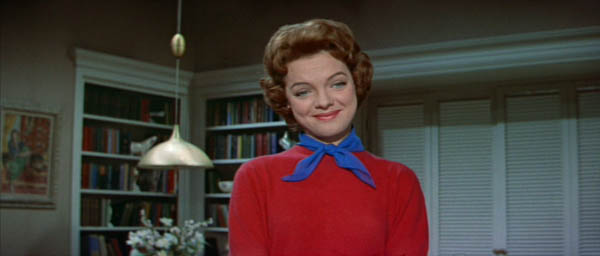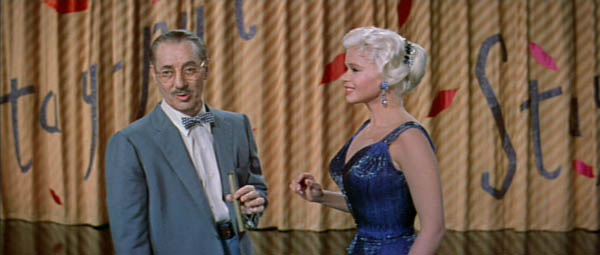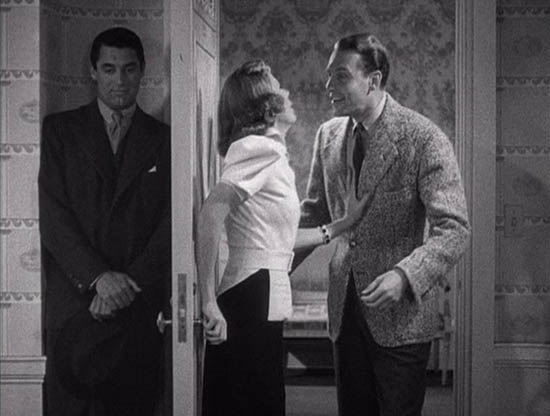I’d heard this was one of those forgotten comic masterpieces, have to say I was underwhelmed. Humor and references seem state-of-the-art to 1957 – I got Groucho’s “you bet your life” cameo but probably missed a lot more.
an alarmed Tony Randall:

In high cinemascope color, a cross between Tashlin’s cartoony style, an advertisement (since our protagonist is an ad-man) and a regular 60’s comedy (Tash was ahead of his time). Tony Randall (from Let’s Make Love) is our ad-man, who makes a deal with superstar Rita Marlowe (Jayne “The Girl Can’t Help It” Mansfield). She’ll do a bunch of ads for his makeup company client, saving him his job (and eventually earning him an unwanted promotion to president) if he’ll publically pretend to be her new boyfriend to make her ex, Bobo Branigansky, want her back. The ex, also a TV star, sort of a Hercules/Tarzan type, is played by Mickey Hargitay, a bodybuilder who would play Tarzan for real three years later. Betsy Drake (not a big star, best known for being Cary Grant’s wife throughout the 50’s) plays Tony’s pissed-off fiancee who threatens to leave him over the whole Rita thing, and 16-yr-old Lili Gentle (one of her only movie roles) is Tony’s excitable niece, a bit Rita fan.
a very red Lili Gentle:

It’s all about knowing where we belong, being happy with our lot in life, finding true love, and making fun of television. Tony and the president of the ad company (John Williams of Dial M For Murder) end up a farmer and a gardener, and Tony’s boss (Henry Jones of 3:10 To Yuma and Vertigo), a born ad-man, ends up an ad-man. Joan Blondell (star of 1930’s musicals, Nightmare Alley) has an interesting part as Rita’s washed-up assistant who yearns for the life she could’ve had with the love of her youth, a milkman, and gets Rita thinking about her own young love, George Schmidlap (Groucho, below).

Katy somewhat liked it, but I have a feeling she’s about done with Frank Tashlin comedies, so I’ll save Artists and Models for another time and go back to the always reliable Billy Wilder (although she didn’t like Ace in the Hole either, hmmm).
check out Rita and her matching poodle:



